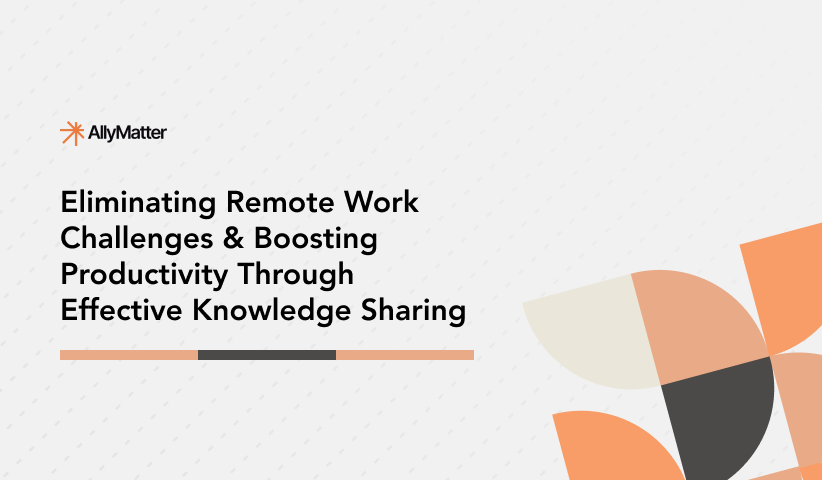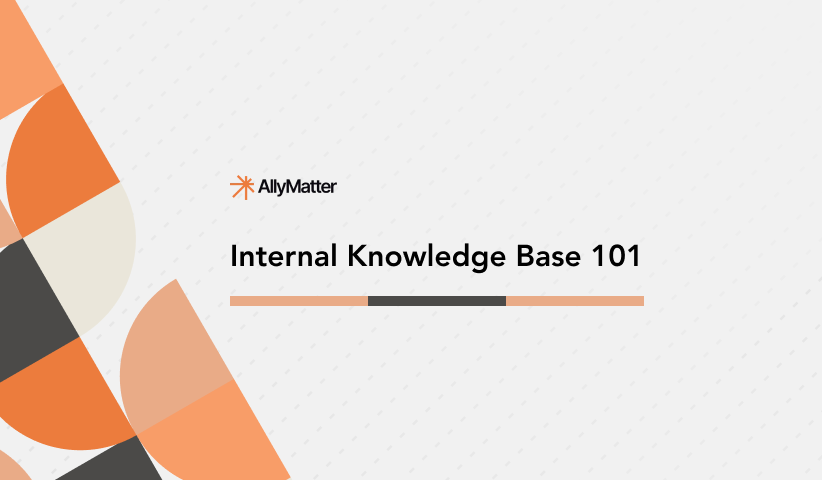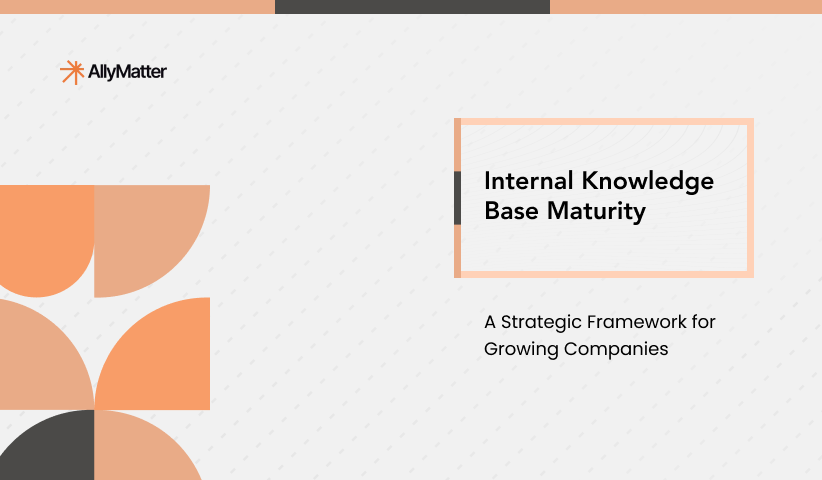
A growing number of U.S. companies are now requiring employees to return to the office. However, many American workers, particularly Gen Z, are expressing a preference for staying remote; with some even willing to seek new opportunities rather than give up working from home.
On the other hand, one of the main reasons organizations are pushing for a return to the office is to promote better communication and facilitate seamless knowledge sharing.
Gone are the days when knowledge sharing was a dull, inefficient process. Today, modern internal knowledge management solutions have transformed the way information flows within a company, offering the same level of ease and efficiency as a quick face-to-face conversation. This article discusses the challenges remote teams face and offers practical strategies for improving knowledge sharing across internal teams.
Challenges faced by remote teams
Remote working is on the rise with over 95% of working professionals choosing remote work in some form – hybrid or fully remote. Remote teams naturally risk developing silos, causing important information to become confined to specific teams. This leads to difficulties in sharing knowledge, in addition to the challenge of not interacting with team members in person.
Take customer support teams, for instance, and you’ll find that it’s not practical for employees on one side of the world to send an email and wait for a response from the other. As such, internal knowledge management is key to business performance.
Does having an internal knowledge management system make a difference?
When team members leave, you don’t want them to take the only source of crucial knowledge with them. Research from Panopto shows that 42% of institutional knowledge is unique to individual employees, making systematic knowledge capture essential for business continuity when team members transition. This is especially true for small businesses and startups with limited resources.
An internal knowledge base ensures that valuable information stays within the confines of your business and ensures accessibility across all teams for future reference. Notably, an organization with a strong culture of documentation eliminates the constant need for back-and-forth emails.
A well-organized knowledge base also helps employees understand what information is available within their team, fostering more effective collaboration and teamwork.
Essential strategies for remote team knowledge sharing
Implement a searchable knowledge base
A well-organized, searchable knowledge base is essential for employees to easily access and share information. Creating one is the first step to encouraging knowledge sharing among remote teams.
It doesn’t need to be complicated; begin by listing the most crucial information and identifying the team members who can provide it. Finding the right knowledge management software is key to making this step work.
Essential elements for your remote team knowledge base:
- Document decision-making processes and rationale
- Include contact information for subject matter experts
- Maintain updated project status and milestone information
- Store meeting templates and agenda formats
- Archive completed project learnings and outcomes
Foster a culture of communication
Encourage executives to champion a communication-first culture, ideally starting at the top. Leaders should contribute to the knowledge base and incentivize other team members to share their insights.
Promote cross-functional collaboration to bridge different teams and roles, especially as the company grows and departments become more specialized.
Encourage employees from various departments to network by inviting them to relevant meetings or hosting virtual coffee catch-up sessions.
Create training and onboarding materials
Leverage your knowledge base to create training materials that help new hires get up to speed. For instance, knowledge base managers could consider what would have been helpful when they first joined the company to set the ball rolling and use that momentum to build a comprehensive onboarding program.
This will familiarize new hires with the knowledge base and encourage them to rely on it for guidance. A well-structured knowledge base can reduce some of the anxiety new employees feel by giving them a go-to resource for any questions. It also ensures they don’t hesitate to ask ‘silly’ questions about their role or the company.
Enable community engagement
Allow employees to interact with each other in the comments section of your knowledge base. This builds a sense of community and trust among your team.
Your knowledge base can also act as a forum, where team members can comment on articles. This not only facilitates knowledge sharing but provides valuable feedback on whether your content is effective and relevant.
Enforces trust among team members
Whether working remotely or in-person, your team is the foundation of your company. By offering a useful knowledge base, you foster trust because employees won’t feel like critical information is being hoarded.
When team members contribute to your knowledge base, it highlights their contributions and helps them feel valued. It also empowers other employees to perform their roles more efficiently. This collaborative environment supports growth, as everyone benefits from shared knowledge.
Encourage informal interactions
To boost knowledge sharing among remote employees, it’s important to create opportunities for informal interactions. These activities help foster connection and allow for more spontaneous knowledge sharing. They also help replicate the casual water cooler conversations that often occur in traditional office environments.
Allocate time for knowledge sharing in the weekly schedule
By reserving a few time slots in the company’s shared calendar, you can create dedicated opportunities for employees to freely exchange knowledge with one another. These sessions could include activities like informal brown bag lunches, short presentations, or casual, on-the-spot discussions.
Setting aside official time for knowledge sharing not only encourages the practice but also helps normalize it, making it more comfortable for employees to take time to share their expertise.
Build your internal knowledge base with AllyMatter
As remote work continues to rise, fostering effective knowledge sharing becomes essential to maintaining a connected, productive, and collaborative team. AllyMatters facilitates this with an intuitive, all-in-one knowledge management platform designed to streamline information sharing and collaboration within remote teams.
AllyMatter helps you create a thoroughly searchable, centralized repository that comes with the added benefits of custom user permissions, content versioning, and secure logins.
With AllyMatter, remote work challenges become opportunities for growth and efficiency. Sign up for a free demo and experience zero-chaos, internal knowledge management today!
Frequently asked questions
Why knowledge sharing for remote teams?
Remote teams face unique challenges in accessing institutional knowledge. Unlike in-office environments where information flows through casual conversations, remote workers need structured systems to find critical information quickly and maintain productivity.
How do you measure successful knowledge sharing in remote teams?
Track metrics like reduced email queries, faster problem resolution times, and employee satisfaction scores. Monitor knowledge base usage analytics and the frequency of cross-team collaboration to gauge effectiveness.
What’s the difference between knowledge sharing and knowledge management?
Knowledge sharing focuses on the active exchange of information between team members, while knowledge management encompasses the entire system of capturing, organizing, and maintaining organizational knowledge for long-term accessibility.
How often should remote teams update their knowledge base?
Review and update critical information monthly, with real-time updates for policy changes. Assign content owners to different sections and establish regular review cycles to ensure accuracy and relevance.
Can knowledge sharing replace face-to-face meetings for remote teams?
While knowledge sharing reduces the need for many informational meetings, it complements rather than replaces strategic discussions and relationship-building conversations. It handles routine queries efficiently, freeing up meeting time for higher-value interactions.


